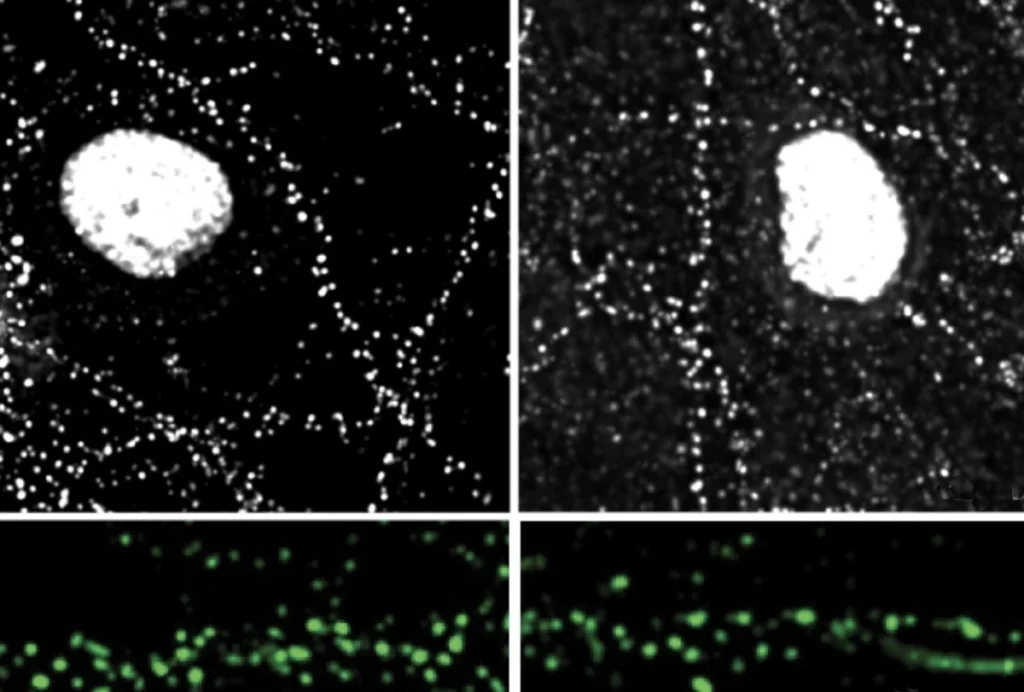A key program to support neuroscience research in the United States faces a 40 percent decrease in funding for the current fiscal year.
The sizeable cut to the National Institutes of Health (NIH) Brain Research Through Advancing Innovative Neurotechnologies (BRAIN) Initiative is a result of the 2024 annual congressional appropriations bill, which was signed into law last month. The bill provides a total of $402 million for the BRAIN Initiative for the current fiscal year, which ends 30 September—a $278 million decrease from the 2023 fiscal year.
On 12 April, John Ngai, director of the BRAIN Initiative, posted an update about the budget change on the program’s website. “While the BRAIN Initiative will not be able to fund programs at the same level as previous years, rest assured that we will continue to support currently active awards, albeit with some adjustments. Please reach out to your program officer with any questions or concerns,” he wrote.
Ngai’s update sparked concern from neuroscientists, some of whom took to social media to discuss the ramifications.
“I’m shocked,” says Doris Tsao, professor of neuroscience at the University of California, Berkeley, whose research is supported in part by BRAIN Initiative funding. She says she learned about the cuts on Sunday morning from a post on X (formerly known as Twitter).
“Understanding intelligence is the problem of the 21st century,” Tsao says. “I just don’t understand how, of all places to cut, you would cut 40 percent from the BRAIN Initiative, which is working to understand how biology achieves intelligence. We’re waiting anxiously to hear what the consequences will be for us.”
It is not yet clear how the cuts will affect ongoing and newly funded projects, or if certain areas of research will be more affected than others. “We are looking closely at all of our programs and will make decisions of where to cut that will least impact the momentum that we’ve built over the past decade,” Ngai wrote in an email to The Transmitter.
“I have heard from many researchers and individuals living with brain disorders who have expressed to me their unwavering support of the work that we do,” Ngai continued. “Their creativity, innovation and continued commitment are essential for BRAIN’s enduring impact. Their voices and experiences are important. Researchers and all those who will benefit from these revolutionary new treatments are welcome to share with their communities how BRAIN Initiative-funded projects have made an impact in their lives.”
T
he BRAIN Initiative was launched in 2013 as a collaboration across 10 federal and non-federal institutes and centers to spur research into the workings of the human brain. Over the past decade, it has funded multiple large-scale projects, some of which are ongoing, including the Brain Initiative Cell Atlas Network, which is pioneering single-cell atlases for the human brain and the mouse brain, and the FlyWire Connectome project, which mapped every neuron in the fruit fly brain and spinal cord.The initiative receives money from multiple sources, including from each of the 10 centers, such as the National Institute of Neurological Disorders and Stroke and the National Institute of Mental Health. Another main source of funding is the 21st Century Cures Act, which allocates money to “highly innovative scientific initiatives” across the NIH.
A large share of the 2024 cut reflects funding changes from the Cures Act, which allotted less money for the BRAIN Initiative than it had in 2023—$172 million, down from $450 million. The 2023 amount was more than double what the BRAIN initiative had received from the Cures Act in the past. In 2022, the act allocated $152 million to the initiative, and in 2021 it allocated $100 million. The Cures Act is funded through 2026, and its budget is ramps down over the next couple of years.
The impending budget cuts could have long-lasting effects—not just for the neuroscience field, but also for patients and economies that rely on the field’s findings, says Takashi Kozai, associate professor of bioengineering at the University of Pittsburgh, who has received funding from the BRAIN Initiative in the past. Recent trainees are starting up labs and launching their own careers, but if there is no funding for their work, that institutional knowledge goes to waste, he says. “The ability to retain that talent pipeline is a major concern beyond just the funding of individual labs.”
Because the NIH is prohibited from lobbying Congress for funding, neuroscientists themselves need to make the case for supporting their research, Kozai says. One way to do that is by contacting their representatives to express the importance of keeping the initiative funded, he says.
Being vocal about policy may not come naturally to researchers, Kozai says. “We are trained to keep our head down, keep our mouth shut and just do really good work and hope that someday someone will reward us. But that’s not our role. As taxpayers and citizens, we have to advocate for the things that we believe in,” he says. “That’s something that has not been part of the academic training process and probably needs to be.”
The next opportunity for Congress to decide funding for the BRAIN Initiative is when it enacts the budget for the 2025 fiscal year, which begins 1 October 2024.



